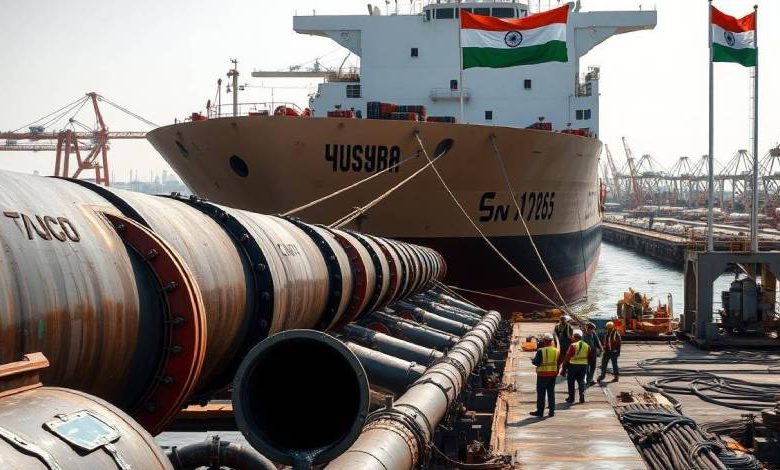India Accelerates Russian & US Oil Imports Amid Mideast Tensions – Is West Asia Losing Ground?

India is actively diversifying its crude oil sources to lessen reliance on West Asia as tensions escalate between Israel and Iran, driving New Delhi to secure alternative supplies.
Despite a recent dip in oil prices following a ceasefire announcement, the market experienced significant volatility after Israel’s airstrikes on Iran. On June 13, oil prices surged 14%, later stabilizing at a 7% increase to $73 per barrel (₹6,200). The strikes targeted Iran’s oil and gas facilities, including the South Pars gas field co-owned with Qatar, raising concerns about global supply disruptions.
Analysts feared that Iran, OPEC’s third-largest crude producer, could destabilize oil flows, particularly to Asia. A potential closure of the Strait of Hormuz a critical passage for nearly 20% of global oil could have pushed prices to $80 per barrel (₹6,882). While this scenario didn’t materialize, prices peaked at $77.08 (₹6,631) before declining. By Tuesday, after Iran’s attack on a US base in Qatar, oil was trading at $69.48 per barrel (₹5,977). Former President Trump credited Qatar for brokering a “complete and total” ceasefire, though Iran’s Foreign Minister Seyed Abbas Araghchi initially denied the truce before confirming no further attacks on Israel were planned.
Amid this uncertainty, India, the world’s third-largest oil consumer and importer, is pivoting to alternative suppliers. The country has significantly ramped up imports from Russia, which accounted for 39% of India’s crude imports in April and May. In May alone, India imported 1.96 million barrels daily from Moscow, surpassing combined purchases from Iraq and Saudi Arabia. Russian oil reaches India via routes including the Suez Canal, Red Sea, Cape of Good Hope, and Pacific Ocean.
Projections for June indicate India will import 2.2 million barrels daily from Russia, with potential increases in July if West Asia’s instability persists. Sumit Ritolia, Lead Research Analyst at Kpler, told Indian Express, “June solidifies Russia’s dominance in India’s oil imports, driven by competitive pricing, non-Gulf logistics, and flexible non-dollar payments. If geopolitical risks or Hormuz security worsen, India’s refiners will likely boost spot purchases from Russia, West Africa, Latin America, and the US, reducing reliance on Middle Eastern suppliers like Iraq and Saudi Arabia.”
Before the Ukraine war, Russia supplied just 2% of India’s oil. By 2024, this share soared to 36%, while imports from Saudi Arabia, the UAE, and Kuwait declined. Discounted Russian oil, facing Western sanctions, saved India billions last year, with discounts dropping from $30 per barrel in 2022 to $5 in 2024.
India is also exploring options like the United States, Nigeria, Angola, and Brazil. US imports rose from 280,000 barrels daily in May to 439,000 in June. Ritolia added, “Should conflict intensify or Hormuz face disruptions, Russia’s share will grow, offering affordability and availability. India may also lean more on the US, Nigeria, Angola, and Brazil, despite higher shipping costs.”
As global oil markets remain volatile, India’s strategic shift underscores its focus on securing stable and cost -effective energy supplies.




